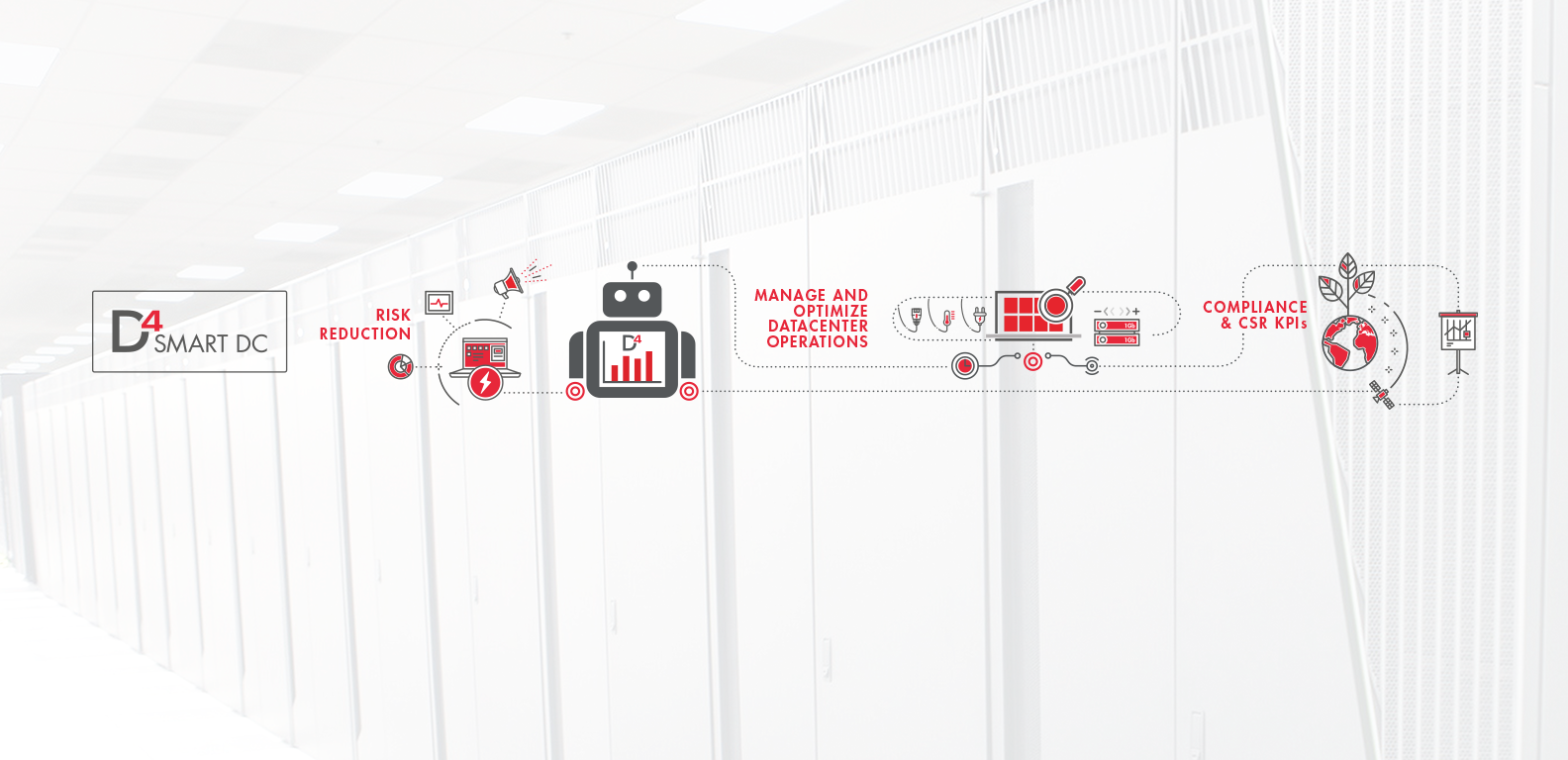
Home to a powerful data center infrastructure management solution since the end of 2018, DATA4 is now opening up this service to its customers via a portal. This results in tangible benefits for businesses in terms of security, capacity planning, energy savings and compliance with environmental obligations.
As data centers become bigger and bigger, their electricity consumption needs to be managed, their availability needs to be monitored, and managing them becomes more and more critical. To help data center managers, infrastructure monitoring applications are available (DCIM – Data Center Infrastructure Management). These tools are the successors to BMS/BIM (Building Management System/Building Information Modelling) software, and include the features of these programs. DCIM tools monitor electricity consumption and cooling and identify IT equipment rack by rack, its position in the data center, and its physical and software characteristics. The aim is to optimise the distribution of electrical power and cooling as well as the physical location of equipment. Key benefits include less frequent incidents, lower electricity consumption, and fine-tuned capacity planning.
Although at first sight, DCIM appears to be of interest only to data center managers, their customers also reap the benefits, if only in terms of costs (they pay for the electricity used) and access to information on how to optimise the management of their equipment.
D4 Smart DC, a solution that has already reached maturity at DATA4
According to a study from consultancy firm 451 Research, suppliers of shared centers can operate at one of 5 levels in terms of maturity of DCIM adoption:
1: no DCIM – the BMS is responsible for managing the data center.
2: the hosting company uses a DCIM for basic features to measure electricity consumption and cooling.
3: the system includes a geographic aspect. In other words, the service provider knows exactly where electricity generator units are physically located, for example.
4: the components of the data center are listed in detail, including application sublayers (virtual machines, for example). Models are used for predictive purposes.
5: the system includes artificial intelligence (AI) features, the foundations of an autonomous data center.
DATA4 is located at level 4 of this model – the only European data center operator at this level. The most crucial aspect is that DATA4 is opening up its DCIM – the Nlyte software program, which is the leading sector player, according to a study by consultancy firm Gartner – to its customers. As standard, customers have access to information produced by DATA4’s infrastructure. As an optional extra, DATA4 offers what could be called “DCIM as a service”: customers can list their equipment in the DATA4 customer portal, reporting that they have, for example, 50 racks in a room, that rack 1 contains a Cisco router, a Juniper switch, a Dell server, etc.
Naturally, a DCIM can only be effective if it is fed with data: “We have 5000 sensors per building, which means that we can collect a whole host of information from all over the building – temperature, humidity, etc. – and produce a 3D model of the server rooms,” says Jérôme Totel, VP Sales Engineering & Product Development at the DATA4 Group.
Real-time alerts
For customers, a DCIM solution like the one offered by DATA4 brings several major benefits – and chief among these is a reduced risk of service interruptions. Customers know what is happening in real time. If they receive a warning that, for example, an electricity generator is no longer operational or that one of their servers is beginning to get dangerously hot (even if their infrastructure continues to be operational), they can anticipate and prevent a disaster by repairing their generator or moving their server load onto another device. In other words, they’re able to anticipate problems and find a plan B while there’s still time. “Our customers have control over their data center as if it were their own. It’s something that really sets us apart from our competitors,” explains Youmma Malak, VP Marketing Group at DATA4. And all without having to acquire an expensive DCIM licence.
Capacity planning made easy
DCIM also makes IT capacity management much easier. “Our aim is for our customers to buy exactly what they need in terms of IT equipment (servers, storage, networking, etc.) in full knowledge of the capacities they have in terms of electrical power, cooling, or simply square footage and cabling – all in real time,” says Jérôme Totel. Customers don’t need to wait two days to find out if they’re able to commission a new server for marketing, which makes the whole process much more efficient.
Having accurate knowledge of your data center is also useful when it comes to regulatory compliance. To fill in the required documents when producing its annual CSR report, a company must be able to state the environmental footprint of its data center as a whole – both that of its own equipment and that of the infrastructure hosting it, which DATA4 provides. The D4 Smart DC solution contains technical information provided by all manufacturers in its database. DATA4 goes even further, offering a complementary module on its customer portal that provides environmental information covering the entire life cycle of IT equipment, ranging from the quantity of rare earth metals and water used in its manufacture to the amount of CO2 emitted when the equipment is recycled or destroyed.
The beginnings of the smart datacenter
“DATA4 is only at the first stages of an automated smart data center. But in this respect, we’re significantly ahead of our competitors,” says Jérôme Totel. To take an example, currently, if a company adds a server to its rack, it knows – thanks to the DCIM – if its rack has enough electrical power. In the future, it will be able to model the hotspots generated by the new server and change its location if necessary. Until then, DATA4 is preparing for the emergence of predictive maintenance and AI by collecting as much data as possible through the 5000 sensors in each of its 15 data centers and storing it in its central database. It’s a thankless and almost invisible task, but one that is at the very heart of efforts to create the data center of the future.

